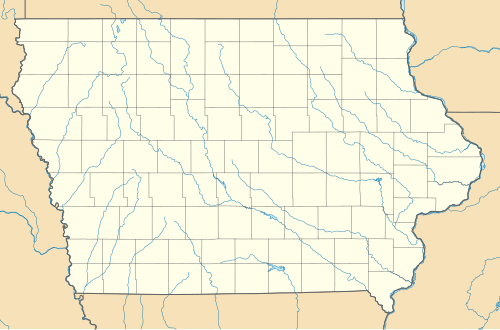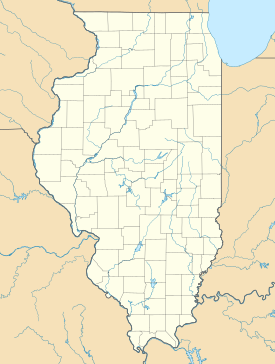Great Peace March for Global Nuclear Disarmament
The Great Peace March for Global Nuclear Disarmament was a 1986 protest march that crossed the length of the
The march
The Great Peace March was conceived by Los Angeles businessman David Mixner, who formed People Reaching Out for Peace (PRO-Peace), a non-profit organization, to fund the trek. Mixner, an experienced political consultant, began planning for the event in 1984 after his work for the Gary Hart presidential campaign ended in failure,[1][2] and announced his plans for the march at the Los Angeles Press Club in April 1985.[3]
PRO-Peace hoped to attract corporate sponsors to provide funding for the march, akin to other major charity events of the mid-1980s like Live Aid, Farm Aid, and Hands Across America. However, the issue of nuclear disarmament proved to be too politically controversial for most of the companies PRO-Peace approached, and fundraising fell well below expectations.[1]
Beginning in early February, marchers gathered in a park in
Despite large and well-publicized contributions from celebrities including Barbra Streisand, who gave the march half the proceeds from her rendition of "Somewhere",[6] and Paul Newman, PRO-Peace had raised less than $4 million by the time the march began.[2] It was estimated that the march's total expenses would be about $21 million,[7] nearly half of which would be needed just to feed the marchers along the way.[8] Caltrans required event organizers to purchase an insurance policy covering at least $5 million in damages before the marchers would be allowed to travel along state highways, but PRO-Peace was unable to afford this much insurance coverage.[9] With logistical problems cropping up and uncertainty as to whether they would even be allowed to cross the Cajon Pass out of San Bernardino, over 200 participants dropped out of the march in the first two days, before it had even left the Los Angeles suburbs.[8][2]
After March 3, however, the group of marchers remained stable at a population of roughly 975[10] or 980. Although it was impossible to exit San Bernardino to the north without using state roadways, the insurance problem was avoided by having buses transport the marchers much of the way to Hesperia. Six marchers were allowed to follow the entire route on foot to complete the symbolic link.[11]
On March 10, the marchers arrived at a campsite eight miles south of Barstow, planning to hold a peace rally at Barstow Community College the next morning and then proceed through the city and further into the desert. However, the college refused to host the rally without liability insurance, while cold and heavy rains incapacitated several marchers[12] and made further progress impossible.[13][14] With serious concerns about the safety of marchers in the Mojave Desert and PRO-Peace almost $500,000 in debt, the march remained stalled outside of Barstow for several days.[12][15]
As supplies ran low, several hundred people left the march. On March 14, Mixner announced to the remaining marchers that PRO-Peace would fold due to its growing debt.[16] The next day, marchers established a new non-profit organization, The Great Peace March for Nuclear Disarmament Inc., which took control of as much of PRO-Peace's facilities and equipment as possible, while other equipment was seized and repossessed by creditors.[17][18] The roughly 500 participants that remained then walked 10 miles to a BMX track on the north side of Barstow, which already had its own liability insurance, ensuring that the marchers would not have to pay that cost themselves.[19] The group began raising funds to continue onward, and in the meantime offered acts of community service to the city of Barstow.[20] The 300 marchers that remained after two weeks in Barstow left the city on March 28 to proceed through the desert toward Las Vegas.[21] Along the way, they democratically elected a "city council" and a board of directors for the new organization.[22]
The march arrived at the Nevada state line near
Briefly crossing the
The
The marchers celebrated
Having crossed through the Rocky Mountains, the flatter terrain of eastern Colorado and Nebraska allowed marchers to pick up the pace, averaging more than 20 miles a day compared to the originally planned 15 miles per day, in the hopes of catching up with the original itinerary for the march.[50] On June 6, marchers hiked more than 25 miles from Fort Morgan to Merino in a single day.[51] In Nebraska, marchers were met with a severe heatwave, and some suffered sunburns and risked heat stroke, unused to the humid conditions after three months in the arid West. The march crossed the 100th meridian, often considered the dividing line between west and east, on June 19.[52] That same day, actress Betty Thomas joined the march.[53] The main body of the march reached Lincoln, Nebraska on June 29,[54] two days earlier than the original schedule had projected.[27]
Having caught back up with their planned itinerary, the marchers were able to honor their previous commitment to spend the Independence Day holiday in the Omaha area working with local peace groups. They had intended to spend July 4 staying on the campus of Creighton Preparatory School, but the school revoked its permission after learning that some marchers were planning to engage in civil disobedience that included entering restricted areas of Offutt Air Force Base, as part of a protest planned by other groups that was not sanctioned by the march organization. Having lost their Omaha campsite, the marchers crossed into Iowa two days early and spent the holiday at Lake Manawa State Park in Council Bluffs.[55] About 100 of the 240 protesters arrested for trespassing at Offutt on July 6 were march participants; all were released shortly afterward.[56]
Marchers commemorated the 41st anniversary of the
In northern Indiana, marchers were offered a
In Pittsburgh, marchers joined unemployed steelworkers for a rally outside U.S. Steel's recently closed Homestead Steel Works.[73] On October 4, two marchers were struck by a car while marching outside of Bedford, Pennsylvania, marking the first such accident of the march up to that point.[74] Marchers met with Mitch Snyder and Philip Berrigan in Fort Loudon, and attended a Ralph Nader rally for Bob Edgar in Shippensburg.[75]
On October 23, marchers crossed the
The march visited
As originally planned, marchers arrived in Washington, D.C. on November 14. The march culminated with rallies in the capital on November 15, in Lafayette Square across from the White House (although President Reagan was at Camp David at the time) and finishing at the Lincoln Memorial. They were lauded by some prominent politicians, including Senator Tom Harkin, Representative Ed Markey, and Washington mayor Marion Barry.[78] Harkin offered the marchers a letter of congratulations signed by 13 other senators, including Ted Kennedy and future presidential candidate John Kerry.[71]: 199 Equipment and leftover supplies from the march were sold off beginning on November 17, with proceeds going to fund future anti-war efforts.[79] A final unofficial protest action was held that same day, with participants blocking doors to the James V. Forrestal Building, headquarters of the United States Department of Energy overseeing the nation's nuclear weapons program.[80]
Activities
The traveling encampment of marchers was referred to as "Peace City", which had an elected city council as well as a ceremonial mayor, Diane Clark. In many of the cities the march passed through, a "Keys-and-Trees" ceremony was held, in which the local mayor would award the marchers a
A lantern containing a flame derived from the eternal flame at Hiroshima Peace Memorial Park was carried along the march by members of Asian and Pacific Americans for Nuclear Awareness. Like the original flame in Japan, it was to be extinguished only when all nuclear weapons on Earth were dismantled and the threat of nuclear war was gone.[82]
Among the amenities provided to marchers was a bookmobile which also served as a schoolhouse for the children that participated in the march, formally known as the Peace Academy Center for Education. The bookmobile received donations of books from libraries in the towns that the march passed through.[83]
One of the most notable marchers was actor Robert Blake, who vowed at the beginning of the march to walk all the way to Washington.[1] While Blake did not remain with the march for its entire duration, breaking from the group at times to drive back to Los Angeles and rejoining them later,[84] he later described the march as a transformative experience that allowed him to escape a faltering career in Hollywood and to come to terms with the abuse he had received as a child actor.[85]
Route
Below are listed the official rest stops taken by the main body of the Great Peace March each night. Throughout the duration of the march, some participants stayed elsewhere, often helping to make preparations for future stops or soliciting donations in nearby cities. Wherever the bulk of the marchers were unable to continue the journey on foot due to safety concerns, a smaller group of "Spirit Walkers" stayed behind to walk along an alternative route and complete the symbolic link, eventually catching back up with the larger march.[71]: 194–196
The national map shows only major stops along the route where marchers camped for multiple nights, typically in or near large cities. The regional maps below highlight these same major stops with a larger marker and labeled with the place name, while all of the nightly stops are shown with the default marker and no label. Some locations are approximate, particularly those far from any named settlement. All markers also serve as links to the article on the place in question, except where no such article exists, when they are clicked on or moused over.
California
- Before March 1: Preparations at Sepulveda Basin Park, Reseda[4]
- March 1: Los Angeles Memorial Coliseum to California State University, Los Angeles[1]
- March 2: Cal State LA to Santa Fe Dam Recreation Area, Irwindale[8]
- March 3: Irwindale to Claremont (no campsite)[2]
- March 4: Claremont to Glen Helen Regional Park, Devore Heights[7][10]
- March 5-6: Resting in Devore Heights[10]
- March 7: Devore Heights to Hesperia Lake Park in Hesperia (traveling mostly by bus)[11]
- March 8: Hesperia to Stoddard Wells Road near Bell Mountain (Mojave Desert)
- March 9: Resting near Bell Mountain
- March 10: Along Stoddard Wells Road to a site near Barstow[86]
- March 11-15: Resting near Barstow (financial difficulties prevented further progress)
- March 16: Moved to new campsite at Barstow Rotary BMX, Barstow[19]
- March 17-27: Resting in Barstow
- March 28: Barstow to private property in Yermo[21]
- March 29: Yermo to site near Albert Mountain[21]
- March 30: Albert Mountain to near Afton[87]
- March 31: Near Afton to near Silver Lake[21][88]
- April 1: Near Silver Lake to Riggs Wash near Baker[21][89]
- April 2: Riggs Wash to Shadow Valley near Mountain Pass, California[21][90]
- April 3: Resting in Shadow Valley (unplanned break due to tractor-trailer breakdown)[90][91]
- April 4: Shadow Valley to California state line at Primm, Nevada[22]
- April 5-7: Resting at state border near Primm[23]
Nevada
- April 8: Primm to federal land near Jean[92]
- April 9: Near Jean to Sloan[93]
- April 10: Sloan to Las Vegas[26]
- April 11: Resting in Sunset Park
- April 12: Sunset Park to Heritage Hall (no campsite)
- April 13: Las Vegas to BLM land near Nellis Air Force Base
- April 14: Nellis to Moapa River Indian Reservation[29]
- April 15: Moapa River to BLM land southwest of Glendale[30]
- April 16: Southwest of Glendale to BLM land northeast of Glendale[94]
- April 17: Near Glendale to BLM land near Mesquite
- April 18: Resting near Mesquite[95]
- April 19: Into the city of Mesquite[96]
Arizona
- April 20: Mesquite to Littlefield, Arizona[31]
Utah
Cisco







